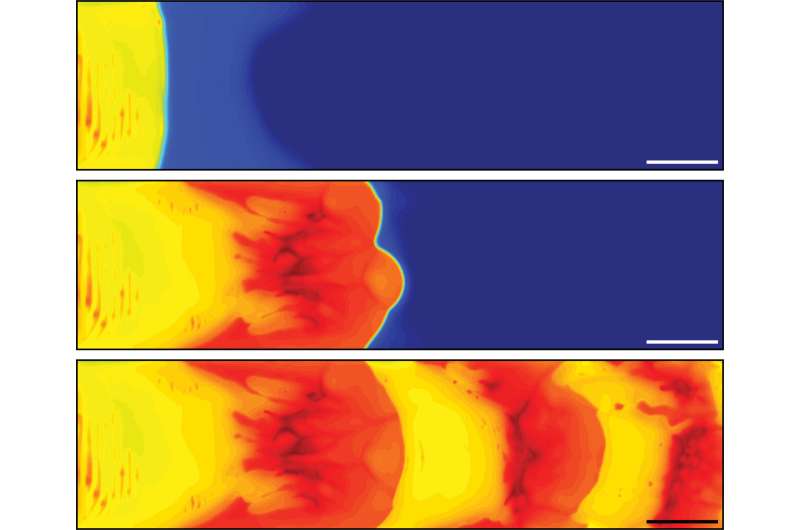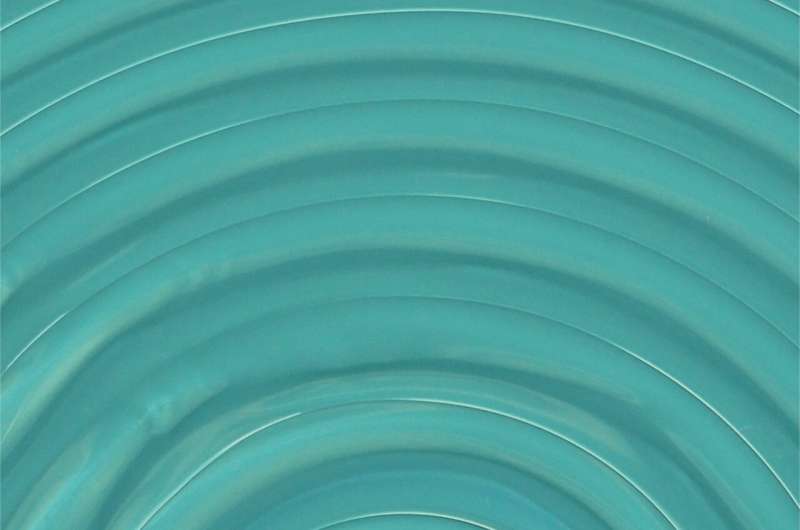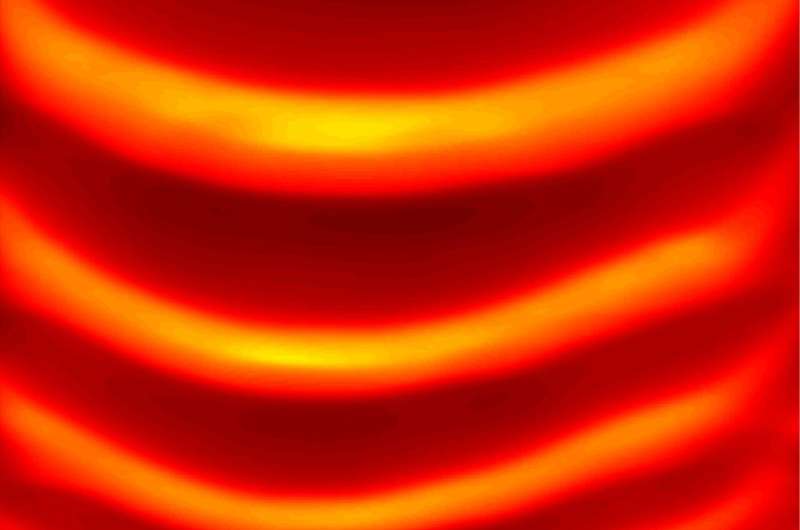A polymerization front marked by heat gradients (red, higher temperature) allows spontaneous patterning of polymers with variable textures, colors and stiffness. Scale bar, 1 cm. Credit: Adapted from ACS Central Science 2021, DOI: 10.1021/acscentsci.1c00110
Nature produces a startling array of patterned materials, from the sensitive ridges on a person's fingertip to a cheetah's camouflaging spots. Although nature's patterns arise spontaneously during development, creating patterns on synthetic materials is more laborious. Now, researchers reporting in ACS Central Science have found an easy way to make patterned materials having complex microstructures with variations in mechanical, thermal and optical properties—without the need for masks, molds or printers.
In animals, patterns form before birth in response to genetically controlled signals that often vary in concentration along a gradient. In contrast, traditional manufacturing approaches for creating patterns and structures involve multiple steps, such as layer-by-layer assembly, lithography, molding or casting. Jeffrey Moore, Nancy Sottos, Philippe Geubelle and colleagues wanted to develop a spontaneous patterning method more akin to the biological process.
The team placed a solution of dicyclopentadiene monomer in a channel and then heated one end of the channel. The heat activated a ruthenium catalyst, which caused the monomer to polymerize, generating more heat that traveled down the channel. This continued to happen until all available monomer in the region was consumed. Eventually, heat traveled farther down the channel to a location where fresh monomer was present, and the process began again.
An optical image of the surface shows ridges generated spontaneously during free-surface frontal polymerization of dicyclopentadiene. The samples are imaged under UV light to enhance visualization. Credit: the Autonomous Materials Systems Group, Beckman Institute
With this technique, the team produced resins with regular ridges, and they controlled the height and spacing of the ridges by adjusting the initial temperature of the solution. By using a different monomer or adding other compounds to the solution, the researchers created materials with patterns of color and stiffness. The new method could someday be used to create a variety of new "smart" materials, from tire or shoe treads to electronics and biomaterials, the researchers say.
This patterned thermal profile is obtained during the free-surface frontal polymerization of dicyclopentadiene in a straight channel. Credit: the Autonomous Materials Systems Group, Beckman Institute
More information: "Spontaneous Patterning during Frontal Polymerization" ACS Central Science (2021). pubs.acs.org/doi/abs/10.1021/acscentsci.1c00110
Journal information: ACS Central Science
Provided by American Chemical Society


























